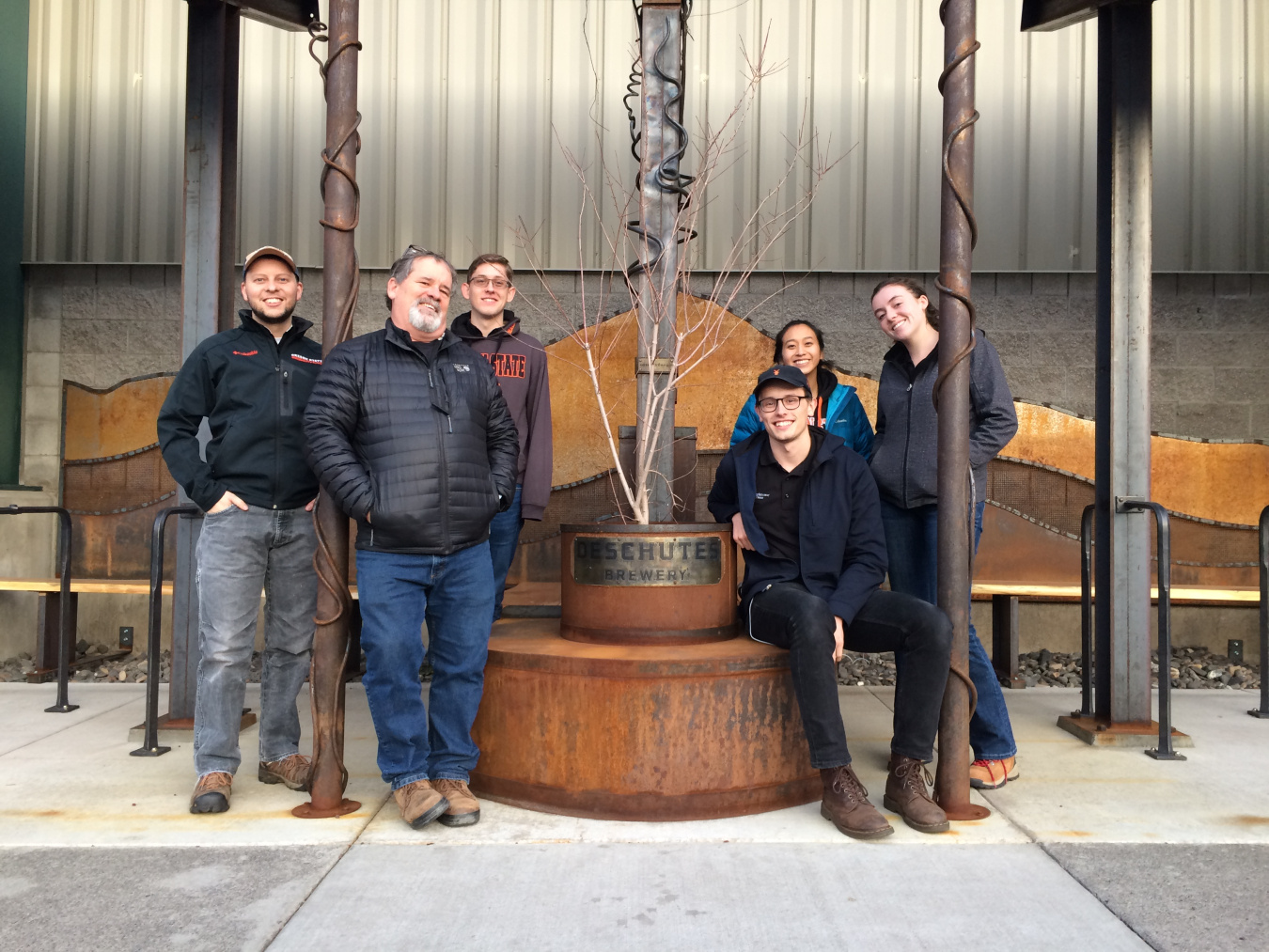“When you raise a glass, pick up a can, or just pass by the beverage aisle in the grocery store, think about where it comes from — the energy, water, and natural resources that go into it,” said Matt Dozier, host of the U.S. Department of Energy’s (DOE) Direct Current podcast, in “Brewing Up Energy Savings”. “And remember that there are people working hard to make the environmental impact of every pint a little bit lighter.”
Beer arrives in the world through an energy-intensive process, from growing its ingredients to operating facility temperature controls and production lines, and then transporting the finished product to the shelves or taps across the globe.
There are many culprits of energy loss at each of these steps along the way of producing beer – and luckily, there are also detectives, trained at the DOE Industrial Assessment Centers (IACs), ready to chase these down and deliver energy savings.

Monica Heng was one of those detectives when she was a student at Oregon State University. Heng was hired as an energy analyst when she was in college to join an IAC on her campus, part of a national system of Centers that train undergraduate and graduate engineering students.
At the IACs, students visit small and medium manufacturers including breweries to do energy audits, giving the students real-world experience as they pursue their degrees and giving the manufacturers free advice to harness significant cost savings and lower their energy usage.
Throughout the 40+ years of the IAC program, over 60 assessments of breweries have been conducted. Heng visited Deschutes Brewery in December 2019 where she toured the facility with facility personnel and took notes to try to identify their bottlenecks or areas where they could save energy.
Heng did not know much about brewing or industrial facilities, but she found her audit experience at Deschutes interesting and recalled a specific audit on bottle washing.
“At one point, the tour guide or facility personnel was complaining, like, ‘Oh, yeah, there's like water that gets everywhere. And we can only do so many bottles at a time,’” Heng recalled. “And seeing all the water on the ground, like that was an indication for me, like, that's a money saving opportunity.
Heng and the Oregon State IAC team found potential cost savings close to $250,000, with a 41% reduction in utility costs. At some of the other facilities audited by the IACs, estimates range into the millions. These stats are peer-reviewed, evidence-based findings by the IAC teams, Heng shared.
“We’re providing them the assumptions that we made, and making it really clear to them that, you know, this is how we got to this number,” said Heng in Direct Current. “And this is why it makes sense based off these numbers. Like even if the number sounds crazy, or even if it's like, ‘Holy crap, that's a lot of savings!’ Right? Usually after we provide them with that sort of assumption, they're a little bit more like, ‘OK, that sounds reasonable.’”
Today, Heng works at Intel as a facility engineer with their liquid industrial waste group, and feels that the experience she gained through the IAC program helped shape her career and brought her up to speed with technical knowledge through the site visits.
“I don't think I don't ever think that I would have gotten this position without that experience,” Heng shared.
Become an energy detective like Heng! Each year, about 500 engineering students at IACs receive hands-on assessment training at operating industrial facilities and gain experience performing evaluations of industrial processes and energy systems. Learn more here.
Make sure to catch the full “Brewing Up Energy Savings” episode here.
